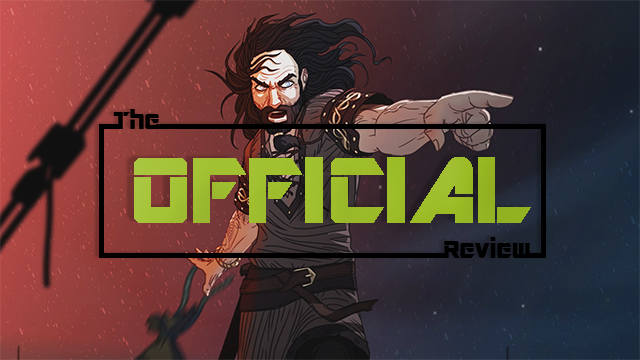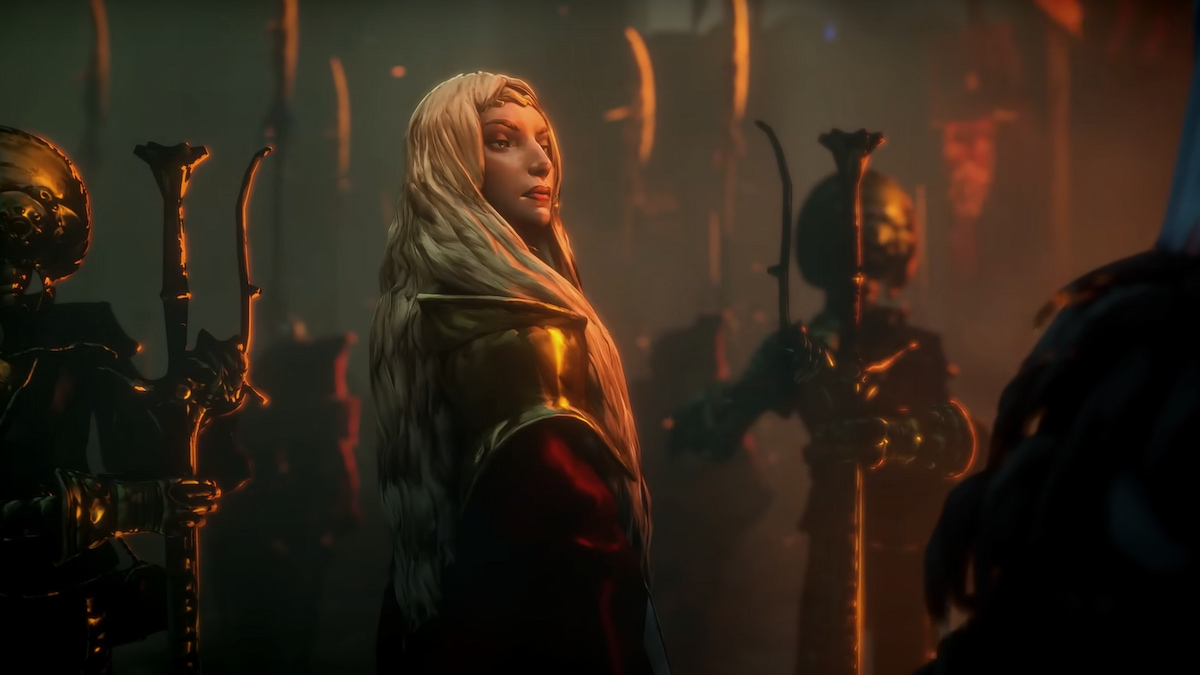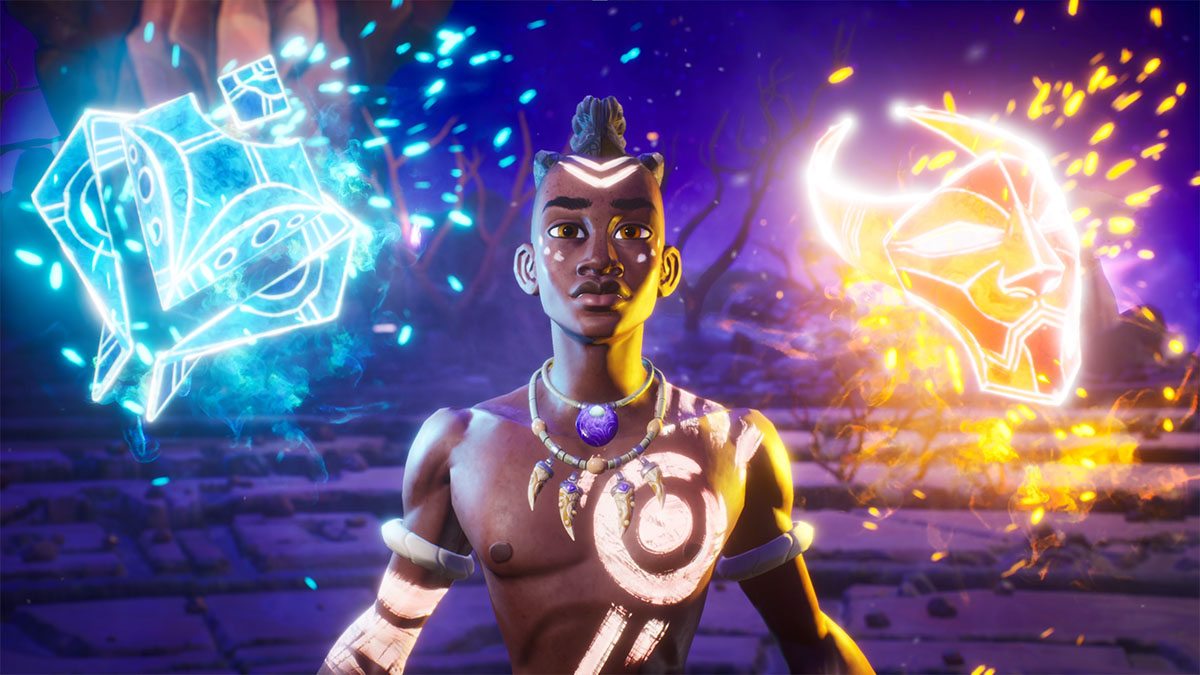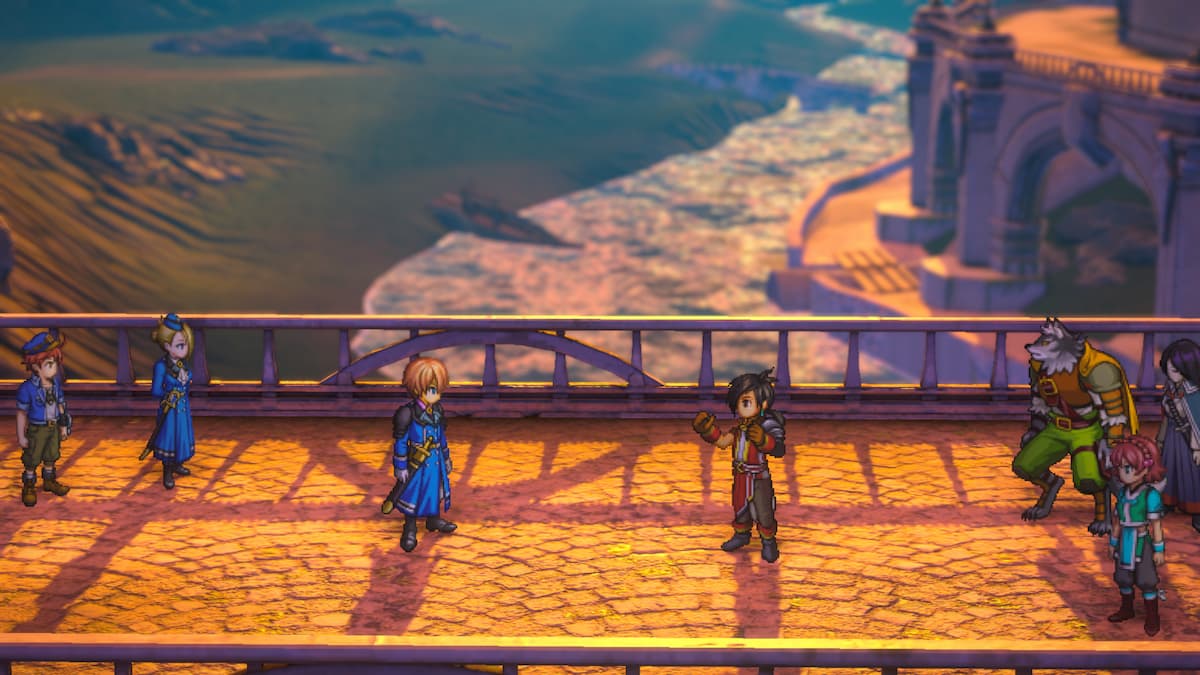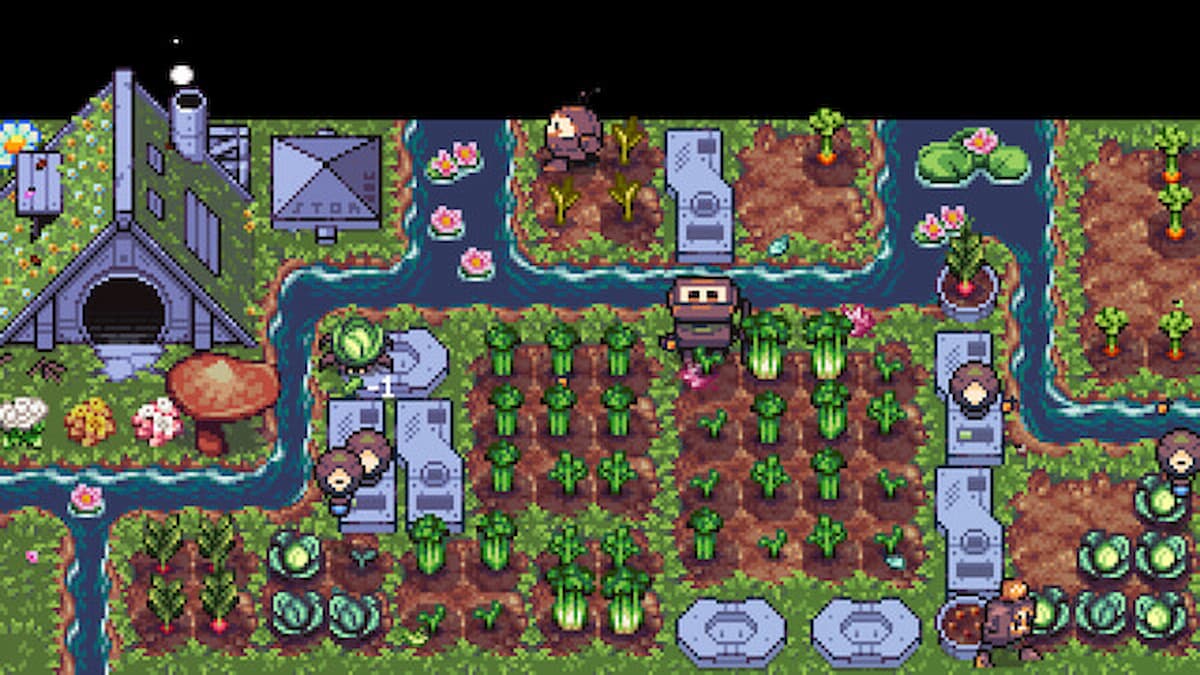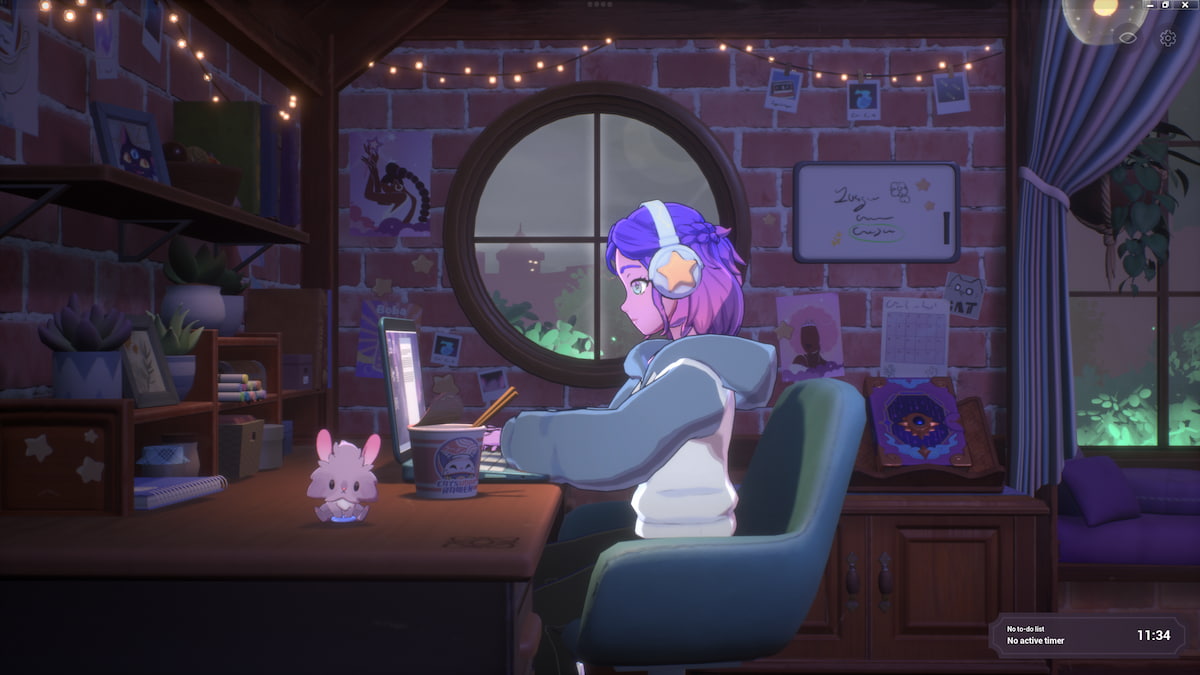From the Saga of Eric the Red, we know Vinland was a real place. It was a land rich with opportunity but also one full of danger, magic, and death. For those unlucky Norsemen (and women) who found themselves marooned upon its shores by chance or by Loki’s mischief, Vinland proved to be both a blessing and a curse.
That simple paradox is resolutely at the center of CCCP’s survival management RPG Dead in Vinland. Exiled from their homeland, a Nordic family finds itself stranded in a strange place that promises both hope and unrelenting despair. It is immediately evident that a peaceful life can be had on Canada’s eastern shores, but it’s one these Vikings must fight for first. They must survive hunger, Mother Nature, and Vinland’s barbaric denizens if they wish to call this land their home.
Part Darkest Dungeon, part The Banner Saga, Dead in Vinland skillfully captures the mechanisms that make survival management games hum with dreadful delight.
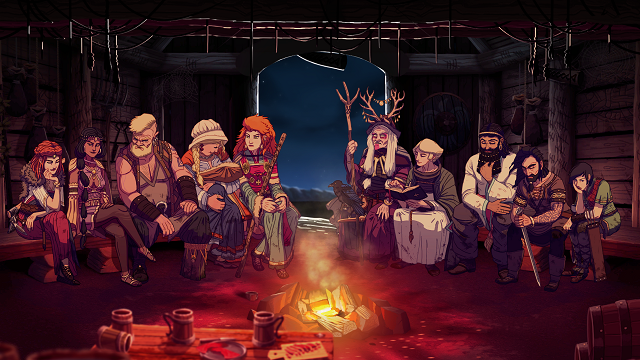
Day to Day Life in Vinland
The crux of Dead in Vinland‘s gameplay is keeping your family alive. Starting with four characters, it’s possible to recruit up to 10 more for a total of 14 party members. All of them have specific traits, skills, and idiosyncrasies you’ll have to juggle to keep things from devolving into madness. However, the catch is that if any of your core family members die at any point in your journey, it’s game over. No questions asked — you’re starting from the beginning.
That means from act one, moment one, you’re tasked with deftly managing nearly a dozen different stats — such as fatigue, depression, hunger, and thirst — for each and every party member, determining which of the ill-fated Vikings is best suited for the myriad tasks that need completing at any given moment. Some characters, such as patriarch Eirik, will be well-versed in hunting and in cutting wood, while others will be better at foraging, scavenging, cooking, or exploring.
The wisest choice is to obviously put characters with specific interests and skill sets on tasks they’re good at to maximize efficiency. However, there’s so much to do in Dead in Vinland that you can never get by that easily. In the early game, you will most certainly have to sacrifice non-essential tasks for essential ones — and force characters into situations they aren’t necessarily comfortable with.
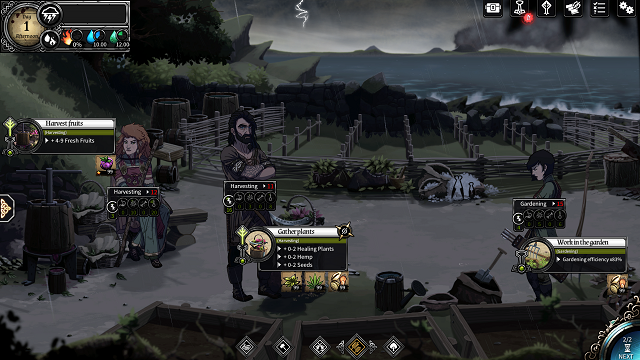
Gameplay is split into days consisting of three turns each (morning, afternoon, and night). Because of that, you’ll have plenty of time to make decisions about who will do what. Since Dead in Vinland is turn-based, you won’t be forced to make hasty decisions, either. Taking your time is the name of the game, and it’s something I highly suggest if you’re playing on the game’s brutal default difficulty.
But having more time only means your decisions should (and certainly do) carry more weight and resonance. No matter what your characters are doing, each and every task they perform has a negative effect on at least one, if not more, of their primary stats. Consequently, decisions cannot be made lightly — or people will die. You will have to decide whether having more wood is more important than ameliorating Eirik’s incessant, nagging depression or if Kari’s sickness can last another night because you prioritized building a sleeping area over forging a cooking pot.
If you’re studious and deliberate with who you choose to perform each task — and how you decide to allocate your hard-earned resources — growing your camp and keeping everyone alive becomes an enterprise of pride, one where each day is a milestone to your success. But forget to gather food or water or let the fire go out, and it’s possible one of your kin will be knocking on the vaunted doors of Valhalla come sunrise.
None of that is to mention exploring Vinland, where you’ll find locked chests full of wonderful treasure, new companions, and mysterious pathways to the gods. In all of these encounters, you’ll be required to pass skill checks (much like in D&D) if you wish to succeed. These, of course, require you to have access to the right characters with the right stats at the right times. Fail to pass a charisma check, and a new warrior may fail to join your party. Fail a strength check when opening a chest, and you may miss out on a horde of treasure and supplies.
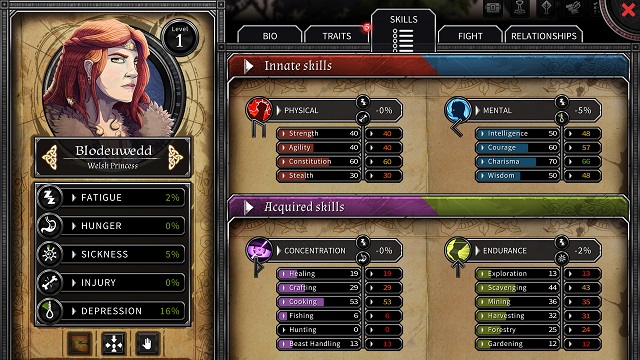
Fighting Brigands and Thieves
After a few days in Vinland, you’ll find that not everyone in this new land is friendly. As is mandatory in any role-playing adventure, there are brutes and henchmen to be wary of, too. In this case, it’s the lug-headed Bjorn Headcleaver. If his name isn’t enough to tip you off to his intentions, I’ll just say he’s not a very nice lad.
Bjorn isn’t like all the other baddies in Vinland, though. He doesn’t want to outright kill you. Instead, like any good, myopic Big Bad, he demands tribute for the privilege of living under his graces. One week, he’ll want 10 Wood, the next week he’ll want 30 Potable Water, and so on and so forth. Quickly, you’ll find that not only are you managing stats and meters, but you’re also rationing your supplies between party members and Bjorn, considerably upping the stakes and making you re-evaluate your strategies.
But if you thought paying Bjorn tribute would keep his goons from attacking you while exploring Vinland, you’d be sorely mistaken. These random encounters play out in a turn-based JRPG format where you choose up to three party members for either 3v3 or 3v2 fights depending on the number of brigands you’re facing. The key here is choosing good fighters who have strong initiative and diversified class skills so you’re able to lord over the entire battlefield with ease.
From arena aesthetics to how actions are displayed, Dead in Vinland‘s combat looks a whole lot like the combat in Darkest Dungeon. And in certain ways, specifically in Dead in Vinland‘s front and back lines, the game plays a lot like it, too. But unlike Darkest Dungeon, it’s a tad easier because of ability points, meaning specific characters can attack more than once in a single turn.
It might not be as deep as Darkest Dungeon when it comes to customization and quest development (of which there’s basically none), but Dead in Vinland‘s combat is a great accompaniment to its other mechanics.
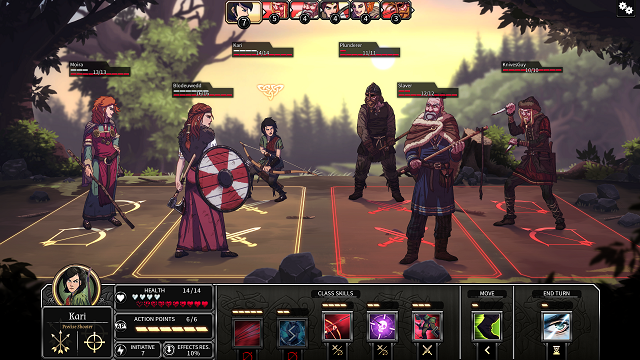
Verdict
For the faint of heart, all of this micromanagement can get a bit tedious and especially complicated as you add members to your party. I’ll admit there were a few times where even I was a bit overwhelmed with it all. Add to that some “interesting” dialog choices that don’t fit the tone and aesthetic of the game, as well as silly and uninspired adversary names like “Knife Guy” and “Plunderer”, and Dead in Vinland isn’t perfect.
But for those who love the survival management genre, nearly all of these mechanics and trappings work in conjunction to make Dead in Vinland an engrossing, thoughtful experience.
This is a game where you’ll make tough decisions — but ones that matter. This is a game where difficulty isn’t a setting — but a mindset. This is a game that surprised the hell out of me — and it’s one I can’t wait to get back to.
You can buy Dead in Vinland on Steam for $19.99.
[Note: Dead in Vinland was provided by the developer for this review.]

